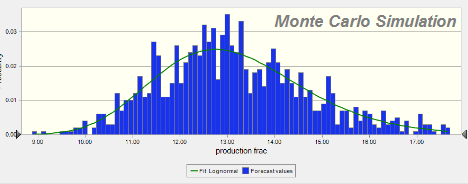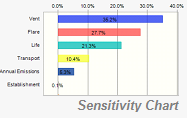Hydraulic Fracturing of Shale for Petroleum Production
Life Cycle Associates developed a model to estimate GHG emissions from oil production from hydraulic fracturing. The model takes into account the key parameters including associated gas production, well life, and methane capture rate. A Monte Carlo model estimates the range of emissions from oil production.


Shale oil is liquid oil stored in micropores of shale formations. Fracking, (or hydraulic fracturing) is used to break up the oil laden microporous rock by injecting high pressure liquid into the rock bed. Well establishment involves pumping fracking sand, ceramic beads, chemicals, and water into the well. Water and high pressure cause the formations to fracture, while the sand and beads hold the fractures open, allowing the oil to pool for collection. The inputs include diesel for hauling water and material and energy for pumping.
Fracking for crude oil also releases significant volumes of natural gas. This high level of produced gas is not surprising since the fracking process is also used to produce natural gas. Venting and flaring of the gas is commonplace to reduce emissions. The quantities of gas being flared is so significant that it can be observed from space.
Questions
Do you have questions about our experience with calculating GHG emissions from hydraulic fracturing of shale for petroleum production?
